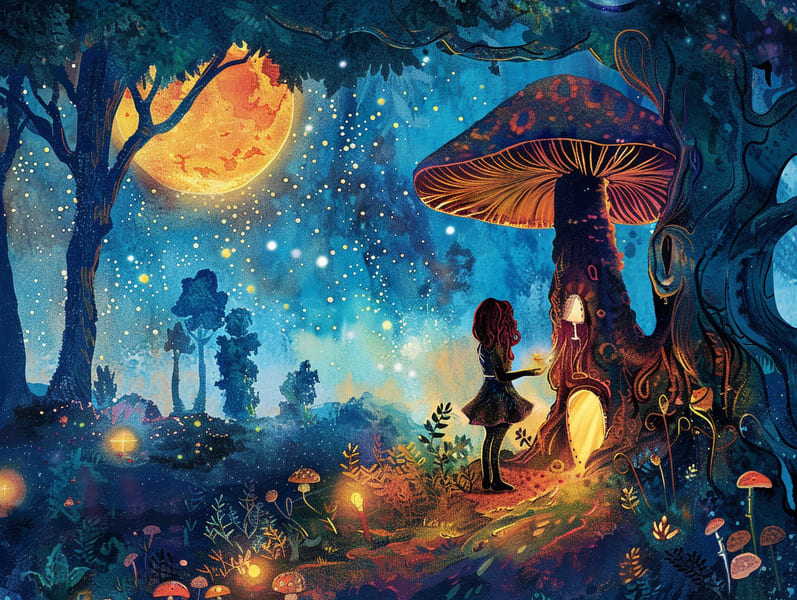The Inception of Fairy Tales to Read with the Eternal Loveliness.
The Inception of Fairy Tales to Read with the Eternal Loveliness.
Blog Article

Old fairy tales have old origins. These stories have been spoken from one generation to the next ages before they were ever inscribed. They emerged from a variety of backgrounds, including American traditions. They were initially narrated among grown-ups, often carrying themes and messages mirroring the societal norms and beliefs of the time.
The famous Grimm duo, Jacob and Wilhelm (the Grimm brothers), were among the first to compile many of these beloved narratives. Their anthology, "Grimm's Fairy Tales," included narratives like "The Little Glass Slipper," "Hansel and Grethel," and "Snow White," which have since become hallmarks in the world of famous fairy tales. Similarly, H. C. Andersen's magical narratives, such as "The Little Mermaid," and "The Duckling that Could," have stolen hearts worldwide, cementing their place in the pantheon of treasured fairy tales.
Despite being ancient, traditional fairy tales remain as significant as ever, especially as kids' bedtime tales. These charming stories are now available in different formats, including richly illustrated books, captivating animations, and online storybooks.
Their persistent charm can be connected to several captivating elements:
Ethical Lessons: Old fairy tales often offer important moral lessons. Tales like "The Tale of the Boy Who Cried Wolf" teach the benefit of sincerity, while "The Race of the Tortoise and the Hare" exemplify the values of determination and unassuming nature. These narratives offer kids clear distinctions between virtue and vice, building their moral compass in a gentle yet deep way.
Warmth and Understanding: Traditional fairy tales frequently illustrate beings facing obstacles and hardships, stimulating audiences to feel with their struggles and support their triumphs. For instance, "Beauty and the Beast" demonstrates the significance of seeing beyond the surface to understand the true character of a character, advancing insight and knowledge.
Cultural Awareness: Many timeless fairy tales are imbued with the cultural contexts from which they originated. Delving into these stories can provide captivating looks into different customs, developing a sense of global awareness and acknowledgment.
Inventiveness and Fantasy: The magical elements in traditional fairy tales—supernatural elements—unleash children’s creative dreams. These stories transport readers to fantasy realms, generating fantastical thinking and a sense of fascination that continues a lifetime.
Old fairy tales are not only magical but also teaching. They work as fantastical tools in cultivating various thinking and feeling skills in the young. When ancient fairy tales are spoken out loud, they enhance language acquisition by bringing new terms and meanings and complex sentence structures. This practice also promotes hearing perception and attentiveness, as little ones keep up with the story, anxious to see what happens next.
Furthermore, examining the themes and characters of fairy tales can enhance problem-solving abilities and analytical skills. Young ones are led to notice patterns, forecast, and figure out cause and effect. These reflections also aid young ones say their thoughts and feelings, contributing to their emotional intelligence.
In today’s online age, the presence of online storybooks has made these fairy tales more reachable than ever. Internet sites and apps give comprehensive collections of famous fairy tales that can be perused or listened via anytime, anywhere. Fairy tales read out loud are particularly well-liked, extending an captivating way for the young to enjoy these charming tales. Audio stories and narrated videos transport characters and settings to life, often joined by entrancing music and musical scores that enhance the story journey.
The enduring charm of ancient fairy tales lies in their ability to evolve to new eras while keeping their core values. Contemporary adaptations of these fairy tales often showcase more diverse characters and modern settings, making them understandable to today’s audience. However, the underlying themes of fortitude, charity, and justness remain unchanged, continuing to move audiences of all ages.
Fairy tales also offer a sense of security and recognition. They yield a systematic narrative with a apparent beginning, middle, and end, often coming to a close with the termination of conflicts and the triumph of good over bad. This uniformity can be soothing for little ones, spreading a sense of security in an shifting world.
Ancient fairy tales continue to entrance and teach new generations, maintaining their charm and applicability in modern society. As bedtime stories for kids, they deliver a perfect blend of wonder and wisdom, enhancing moral values, empathy, and creativity. The accessibility of digital fairy tales and the in demand status of fairy tales voiced promise that these timeless narratives remain acquirable to new generations.
By keeping and making known these stories, we continue to praise the rich tapestry of cultural heritage and cultural heritage. Whether you are seeing a colorful picture book, browsing a virtual collection, or hearing an voice book, the delight of old fairy tales is always within reach. These narratives convey of the invariable impact of tales and its ability to connect us across eras and regions.
No matter if you are experiencing a beautifully illustrated here book, seeing a electronic library, or playing an voice book, the wonder of famous fairy tales is always within reach.
These fairy tales remind us of the unwavering power of storytelling and its ability to unite us across epochs and places, creating a bond that captivates and teaches alike.